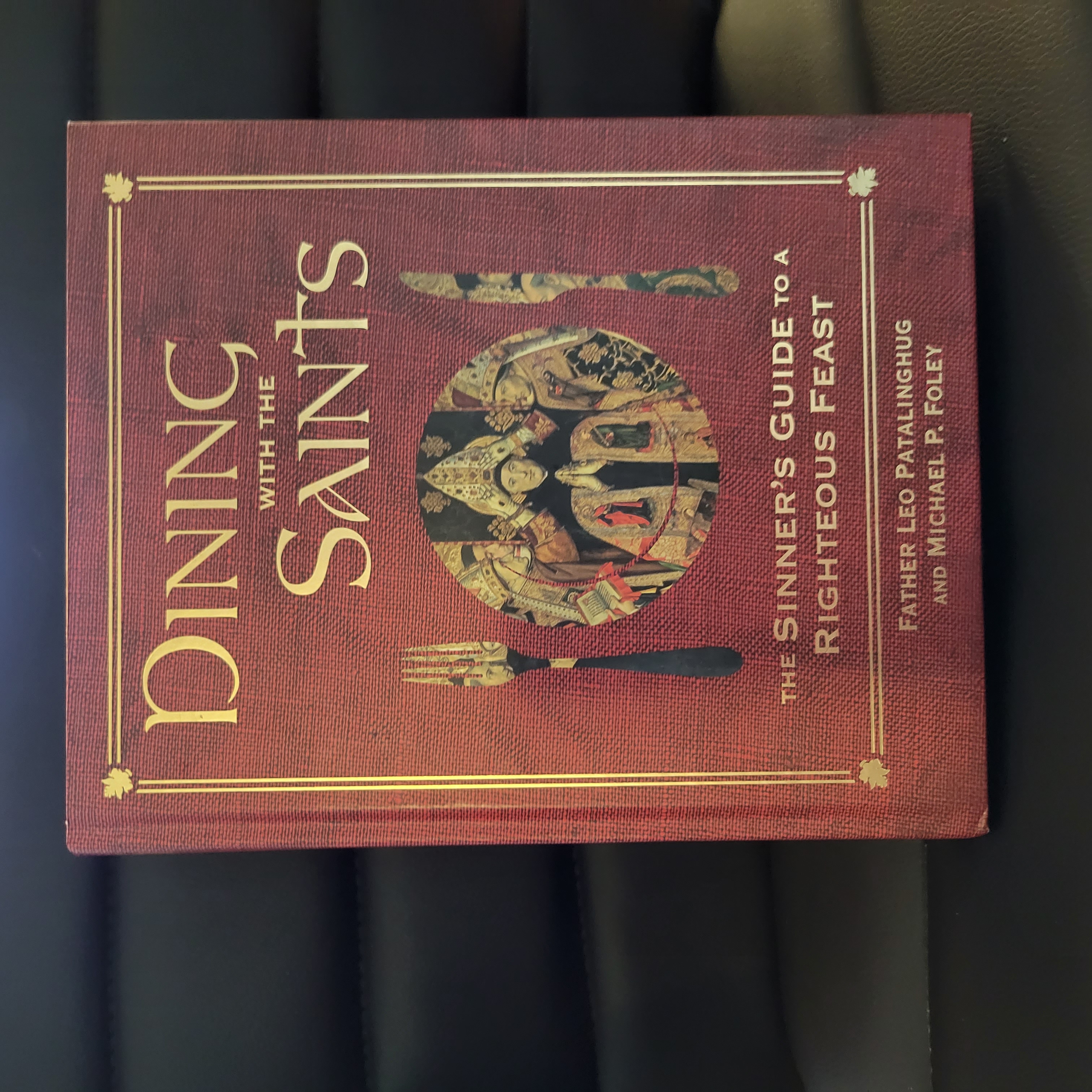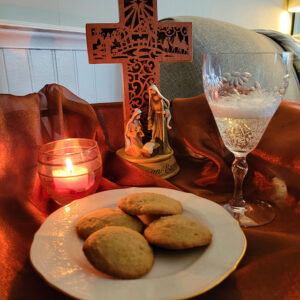Review: Dining with the Saints:
The Sinner’s Guide to a Righteous Feast




![]()
![]()

Viewers of the long-running tv drama, Blue Bloods, have created a popular culture undercurrent of anticipation for the program’s Sunday supper scenes. In it, four generations of Reagans, New York-based Irish American Catholics dedicated to law and service, gather to pray, argue, commiserate, laugh, and reminisce over a family-prepared meal. There, they remind one another from whence and whom they came and where they are going. The elders, Gramps and Dad, preside from each end of the dining table like two Solomons, maintaining order and reason. Regardless of the strife and animosity that may have come between siblings or parent and child during the week, they now sit for a meal among kin. All ages participate in an unspoken understanding that the place is sacred and together they join in a reverent act.
What the fictional Reagans play out exemplifies “theology of food,” the concept behind Fr. Leo Patalinghug’s ministry, Plating Grace. In Dining with the Saints: The Sinner’s Guide to a Righteous Feast, he and co-author, Michael P. Foley, help diners create their own family altar and a feast for the body, mind, and spirit that recalls Psalm 34:8: “O taste and see that the Lord is good.” Countless studies have documented increased depression, loneliness, and poor health habits in this country. We are paying for the lack of tradition, family, and faith. Twenty-first century Americans starve not only for nutritious meals but an “encounter experience” with one another. The authors are keenly aware that the canceling of thanking God for His gifts and sacrifices, for which we hunger, and asking Him to bless our meals before digging in leaves a void within. “We fear that the loss of the family dinner will also have a bad effect on the very source and summit of our worship (page x).”
More than a cookbook, Dining with the Saints provides a framework upon which folks may fortify their bodies, relationships with one another, and with God. The volume packs ideas for meals, conversation, and prayer in its 353 pages. Most of the 140 recipes, designed by Fr. Leo to be tasty, convenient, and nutritious, require few ingredients and little prep and cook time to afford a nourishing homemade repast.
Father Leo is known for his affability and humor. His experiences include penning the book Saving the Family and Spicing Up Married Life, an EWTN cooking show, and a memorable “beat down” of Bobby Flay on the Food Network, all of which showcase the means and methods by which he evangelizes. His fans will want this latest. This work, however, is just as much Mr. Foley’s. The hardcover’s title, clever cover design, and organization all parallel his other books, Drinking with the Saints: The Sinner’s Guide to a Holy Happy Hour and the smaller Drinking with your Patron Saints: The Sinner’s Guide to Honoring Namesakes and Protectors. The Baylor University professor with expertise in the early church, charmingly and theologically contributes Food for Thought portions and saints and seasons and with the recipes. “Whenever possible, Dining with the Saints presents what a saint actually ate or a piece of advice he or she gave about eating and drinking.” (page x). Mr. Foley’s knowledge of hagiography (the lives of the saints) presents some twists and turns, even for saint devotees.
It’s well known that St. Padre Pio bore the stigmata, but how many could correctly name his favorite vegetable or how it reflects of his personality? Another curiosity is the Chicken Tikka Masala (April 21) that many would assume would be attributed St. Thomas who was “hailed as the apostle of India,” but not so. That honor goes to Italian-born St. Anselm. For our Doubting Thomas, the authors chose a German sweet bread, Saint Thomas’s Kletzenbrot (Dec. 21). Some dishes have rather straightforward names such as Angel Food Cupcakes (Oct. 2, Feast of Guardian Angels), but the intriguing gelatin mold made with fresh raspberries may be lost for the evening’s dessert because it’s called Blancmange (December 29, Feast of the Holy Innocents). Candlemas, also known as the Presentation of Jesus Christ (Feb. 2), offers the ever-delectable Lemon Meringue Pie.
The authors deliver a delightful glimpse into Catholic church past using the 1962 Roman calendar which has more feast days, many unknown to post-Vatican II generations. Even the most catechized Catholic will appreciate discovering some long-forgotten days, such as Drunkard’s Thursday and Quinquagesima Sunday. Part One of the book ties recipe selections with the Feasts of Saints calendar. Part Two addresses the Liturgical Seasons. A five-page reference shows a side-by-side comparison of the “new” date with the traditional. A practical index based on course or main ingredient helps the culinarian find a recipe more quickly. The authors, however, encourage preparing the dishes any time. Enjoy the savory Sausage with Onion Gravy dedicated to Gregory the Great on the “old” date of March 12, the “new” date of September 3, or whenever the occasion fits. St. Gregory’s Food for Thought reminds that “evangelizing requires fellowship with people . . .becoming a part of other people’s lives. . . . Breaking bread together creates a sense of communion . . .” (page 40). Share it with those close to you and those you want to know. Download some Gregorian chants and enjoy food, fellowship, and God’s blessings upon you.
Copyright 2023 Mary McWilliams
Images and quotes used with permission, copyright 2023, Regency House